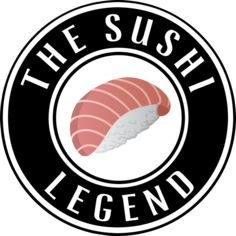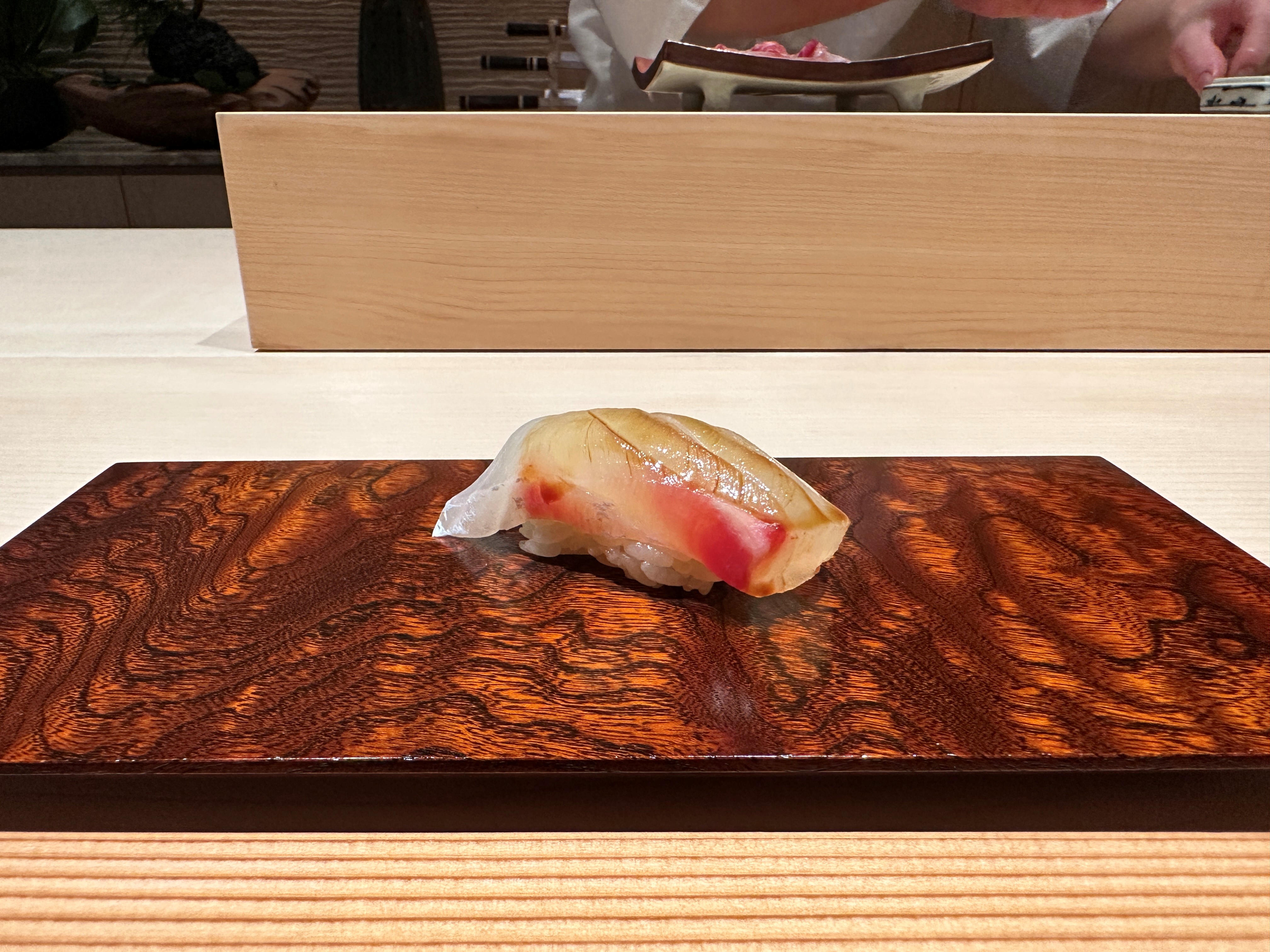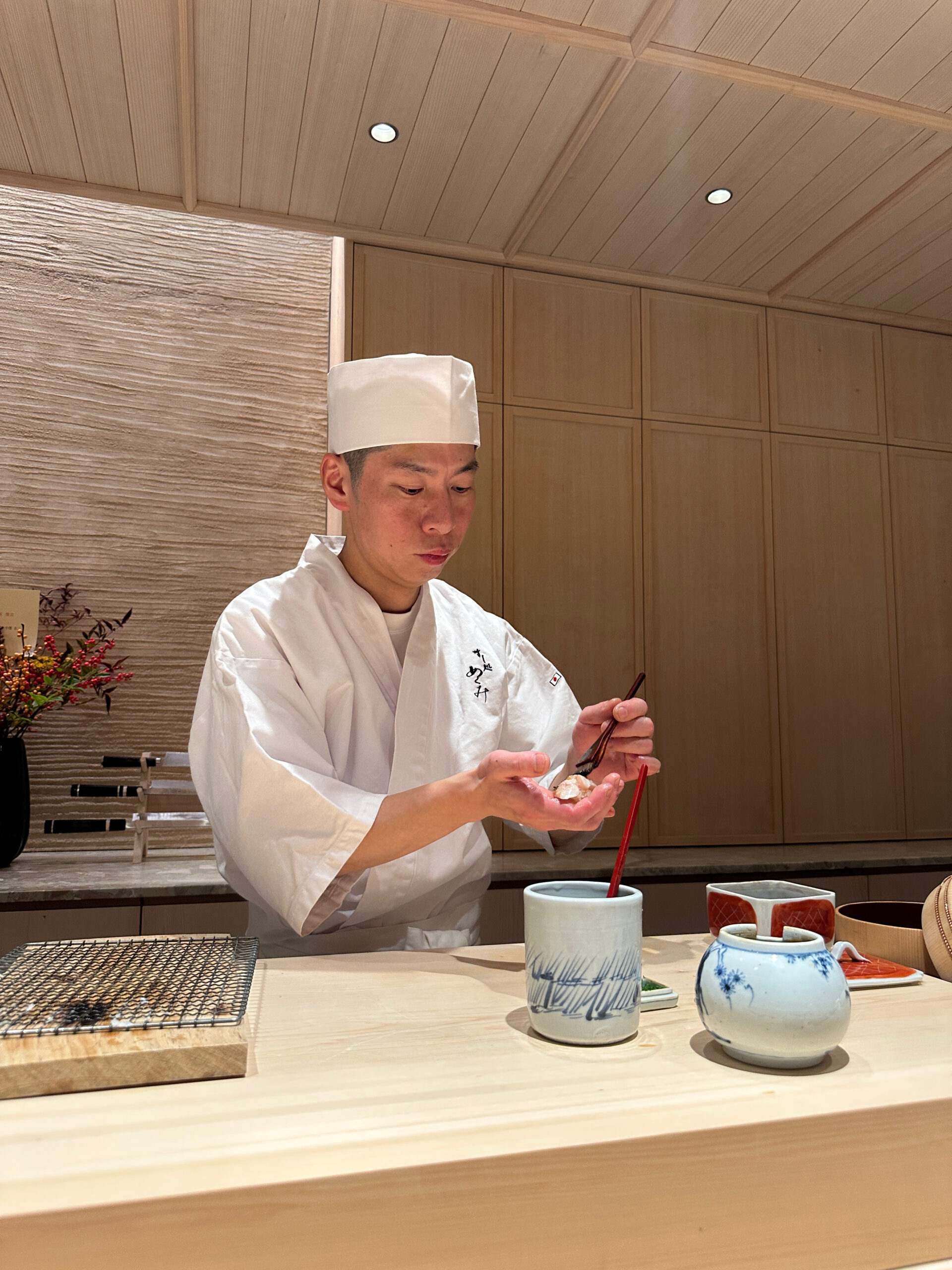 SUSHI MEKUMI IS FANTASTIC BUT NOT PERFECT – YET
SUSHI MEKUMI IS FANTASTIC BUT NOT PERFECT – YET
The recent opening of Sushi Mekumi in Hudson Square is a microcosm for a shift in New York City sushi. For a few years, the most hyped sushiya openings were rising stars or established legends bankrolled into a new counter. Sushi Noz. Sushi Ichimura. Shion 69 Leonard. Noda. Even Sushi Nakazawa, that paint-by-numbers icon.
But as it so often goes, trends grow and then grow tired; not as tired me after Game 3 of the World Series with a rooster flight out of Pearson, but close. Things evolve. It’s no longer enough to poach an apprentice from a sushiya in Japan, you need to poach the entire sushiya, or at least a substantial chunk. Yoshino was a pioneer, but Sushi Sho and the forthcoming Sushi Yoshitake are other examples.
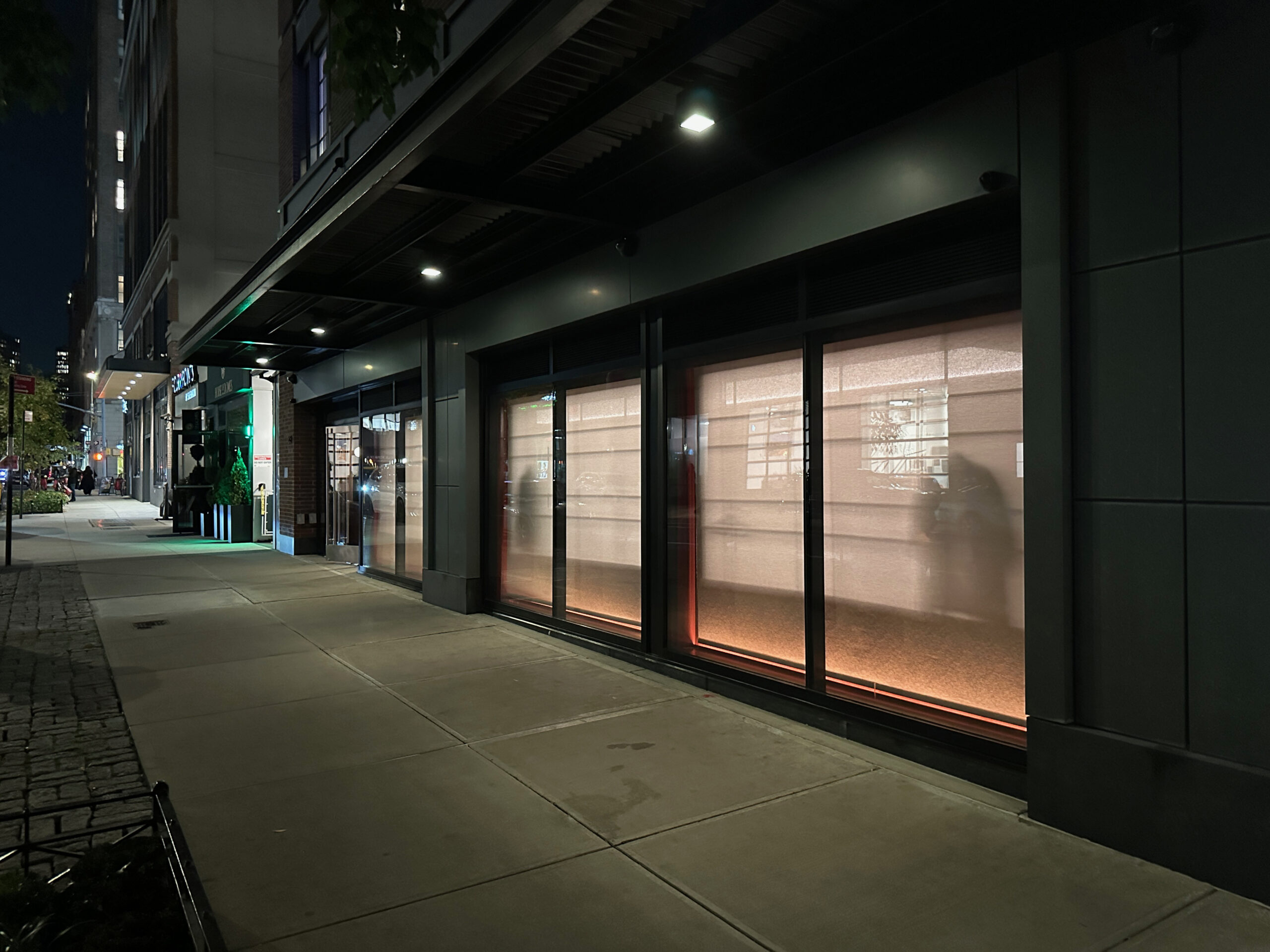
Outside Sushi Mekumi NYC
And now Sushi Mekumi, the outpost of Sushidokoro Mekumi in Nonoichi of Ishikawa prefecture. The sushiya is the brainchild of Takayoshi Yamaguchi, who named it after his wife. Yamaguchi-san’s commitment to sourcing seafood from his region, Hokuriku – including Kanazawa and the Noto peninsula – differentiates him from other famous shops. In winter, that usually means regionally famous snow crabs, Kano-gani (male) and Kobako-gani (female), but some version of a crab is highlighted all year round.
Yamaguchi-san’s commitment and waza (technique) earned him a spot in Andrea Fazzari’s Sushi Shokunin, a book that (a) I’ve talked about ad nauseum and (b) profiles 20 legends of the sushi world (I spoke to Andrea here).
The New York City outpost is run by Yamaguchi’s apprentice, Hajime Kumabe. He’s about the nicest person I’ve ever encountered behind a sushi counter.
EXHIBIT A
The night I went – and I’m not fucking with you here, I never would, you’re all my legends – an absolute asshole was four seats over. This clown didn’t just show up 25 minutes late, he showed up 25 minutes late with earbuds in. You see, he was on a call, and far be it for a pesky societal norm like “don’t be a douchebag” to get in the way. Through it all, the staff said nothing (I know a chef that might have thrown binchotan). Even when this lunatic left halfway through, Kumabe-san patiently made each nigiri, placed it into a takeout container, and left it for his eventual return.

An absentee customer has the nigiri pile up
With hyped new sushiya – and Mekumi is hyped like Patron Of The New – you’re going to get assholes. Thankfully, unlike Patron Of The New, this is earned hype.
Ps: this may be a tangent for an audience of one, but Patron Of The New is just Marshall’s with better PR. Just look at these racks. And I love Marshall’s, shop there all the time. The clothes are $1,000 less and the store associates are 1000x less douchey.
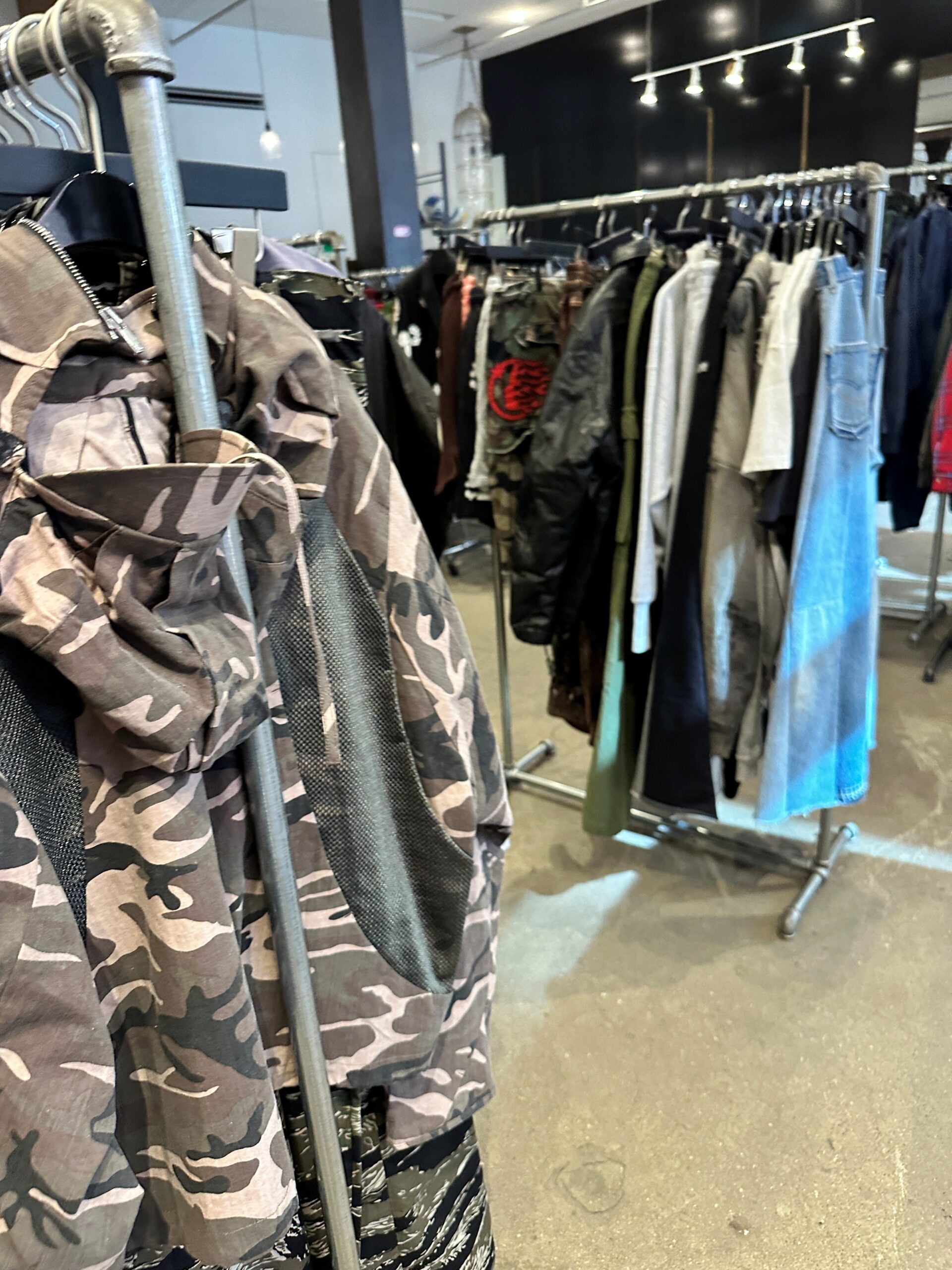
I’m convinced Patron Of The New is a psy-op
A few sushiya in the city even sent flowers. This was nice.
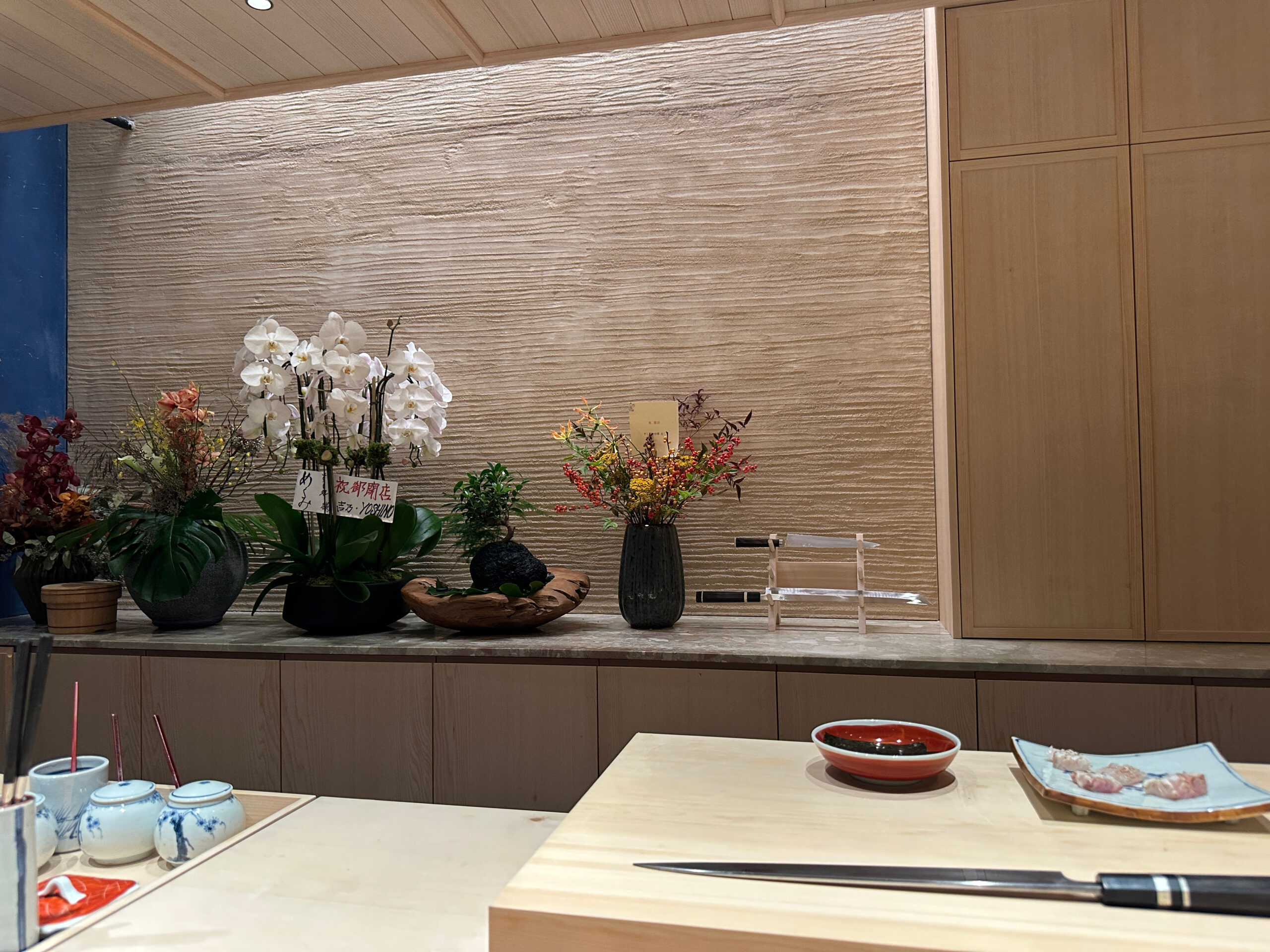
Other sushiya in NYC sent flowers for the grand opening
THE SUSHIYA IS INSIDE 70 CHARLTON
That’s an apartment building. I’m not sure how they chose the location, but the space underwhelmed compared to other sushi temples. My “whelm scale” is judged one way: do I feel relaxed when I’m at the counter. It’s a high bar since my brain fires like the roadrunner on speed, but still. I’m not sure if it’s the blue wall, the music, the hotel lobby style foyer or the bathroom with the wonky door, but I never got there
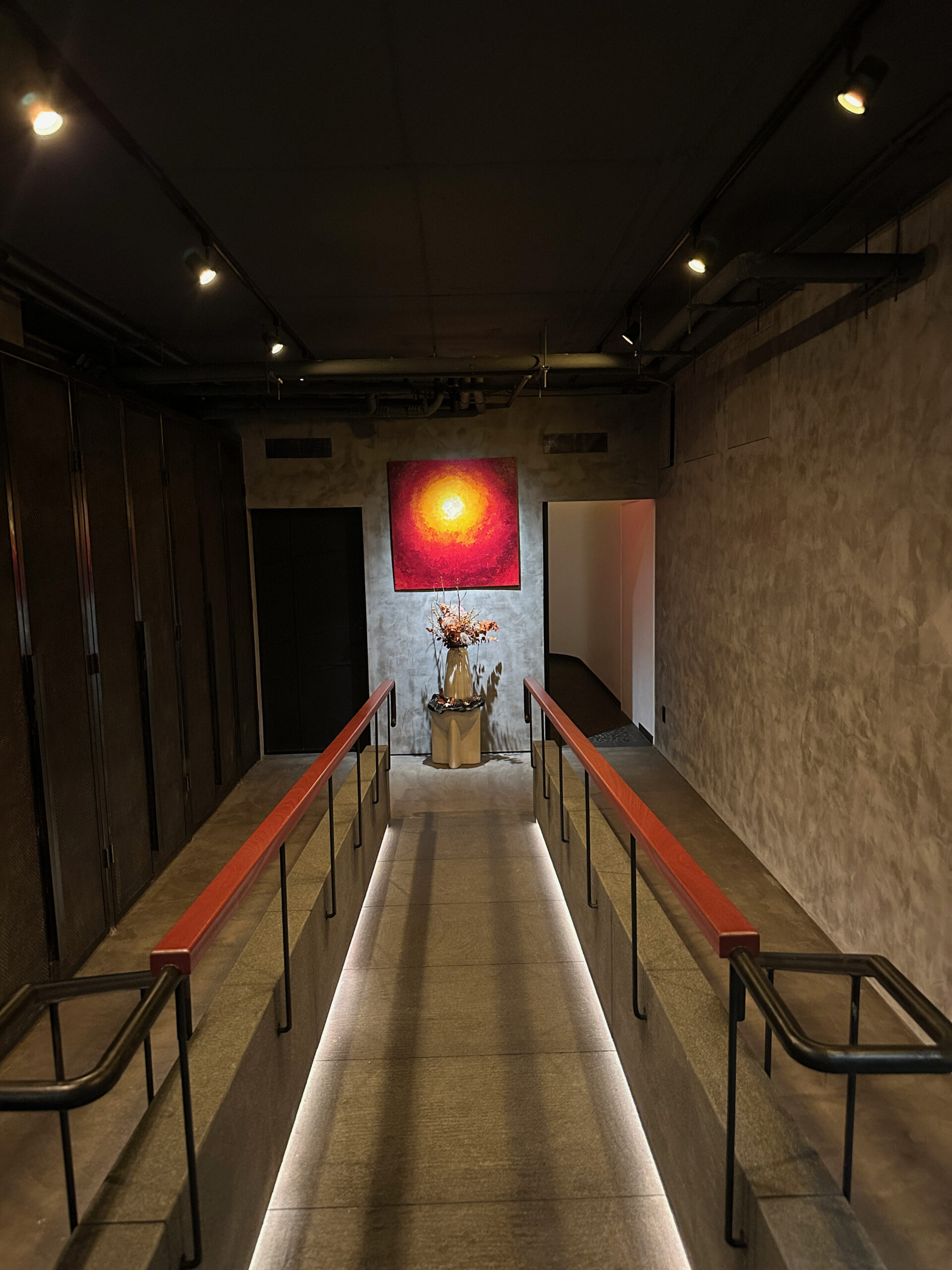
Foyer before the sushiya
THE MEAL MAKES UP FOR IT
The Omakase is a prepaid $300 (++) and between 18 and 20 courses long, though there is a decent Okonomi (essentially a la carte) offering at the end. The courses change nightly, as they should. One of you legends sent me the menu from two nights after, and at least 3 of the 20 courses were different.

1: Kawahagi with its own liver (kimo)
THE SHOW BEGINS
The centrepiece of the entire evening is a 5 pound Kegani (I’m guessing on the weight, I did not bring my scale). I’m firmly in the crab > lobster camp, so this Kegani – which was used for multiple courses – was particularly exciting. It comes from Hokkaido; in fact, 6 of the 16 Otsumami and Nigirizushi courses come from Hokkaido, while just 2 came from Ishikawa.
The extent of my seafood logistics knowledge is nodding along to fishmongers, so I’m sure there’s a good reason. But given that the OG is known for sourcing from its home region, a lack of those ingredients may disappoint some.

Kegani
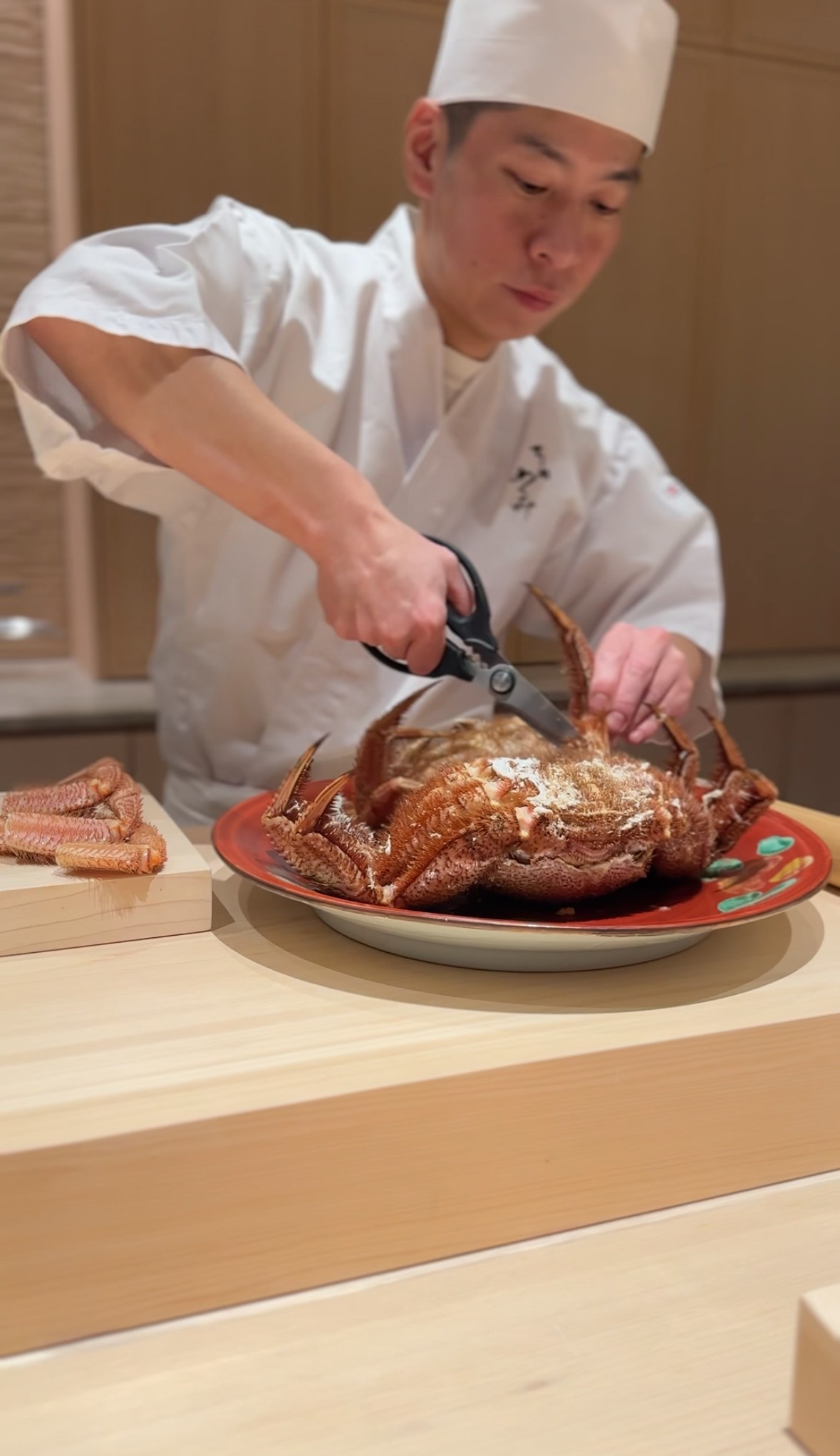

Kumabe prepares the Kegani
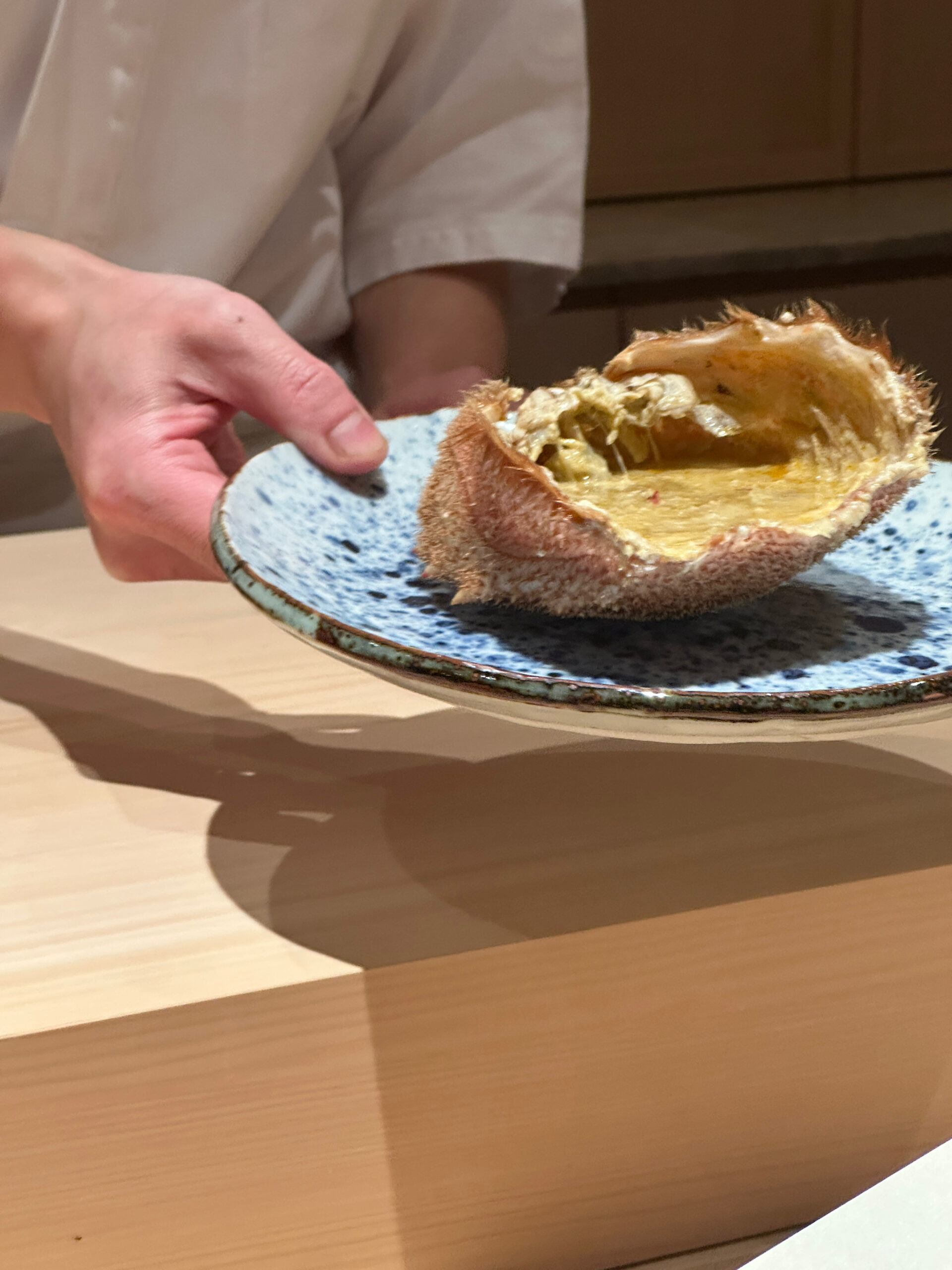
The “crab miso”, a delicacy from the innards of the Kegani
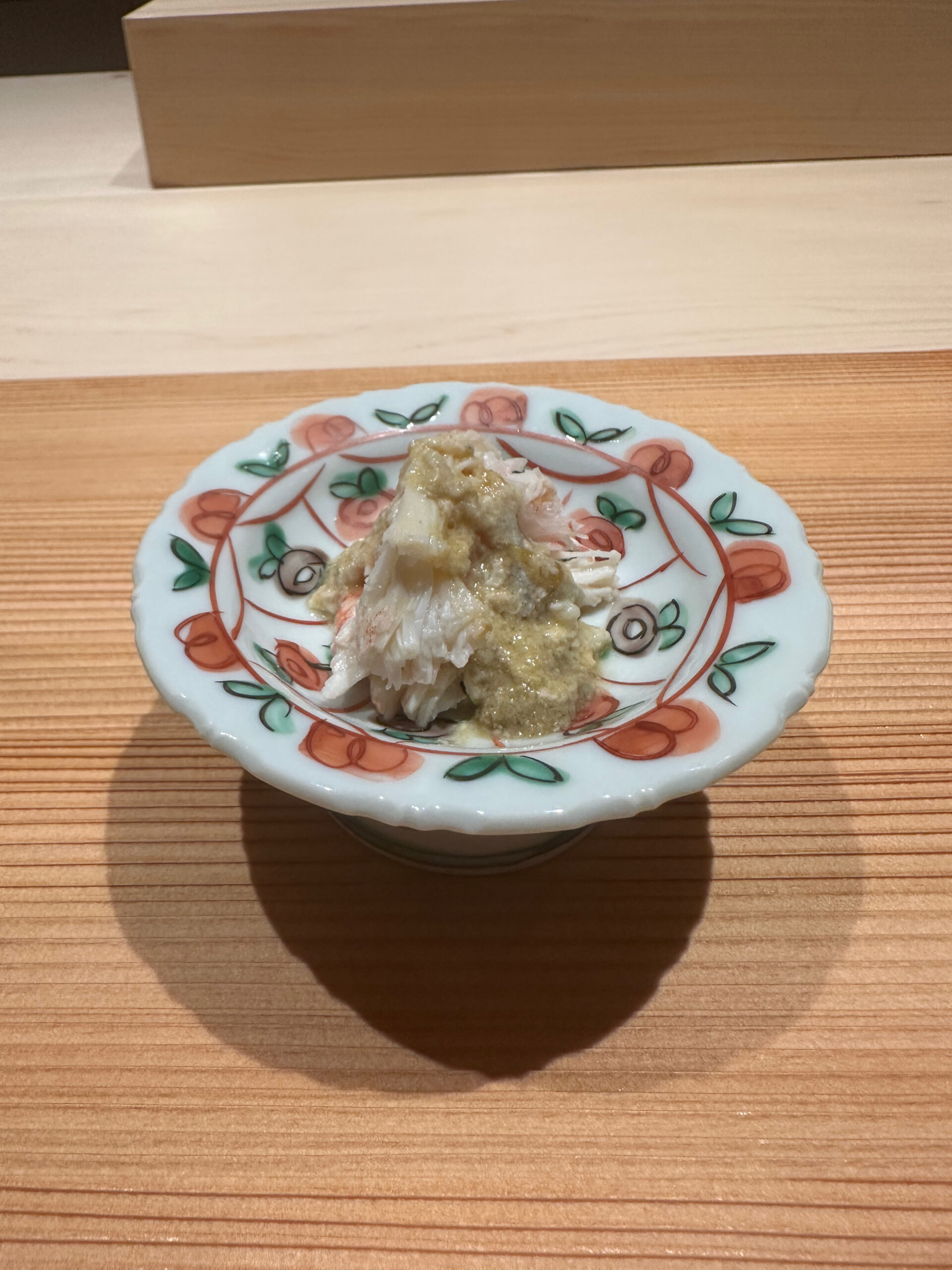
2: Kegani with crab miso. Outstanding.
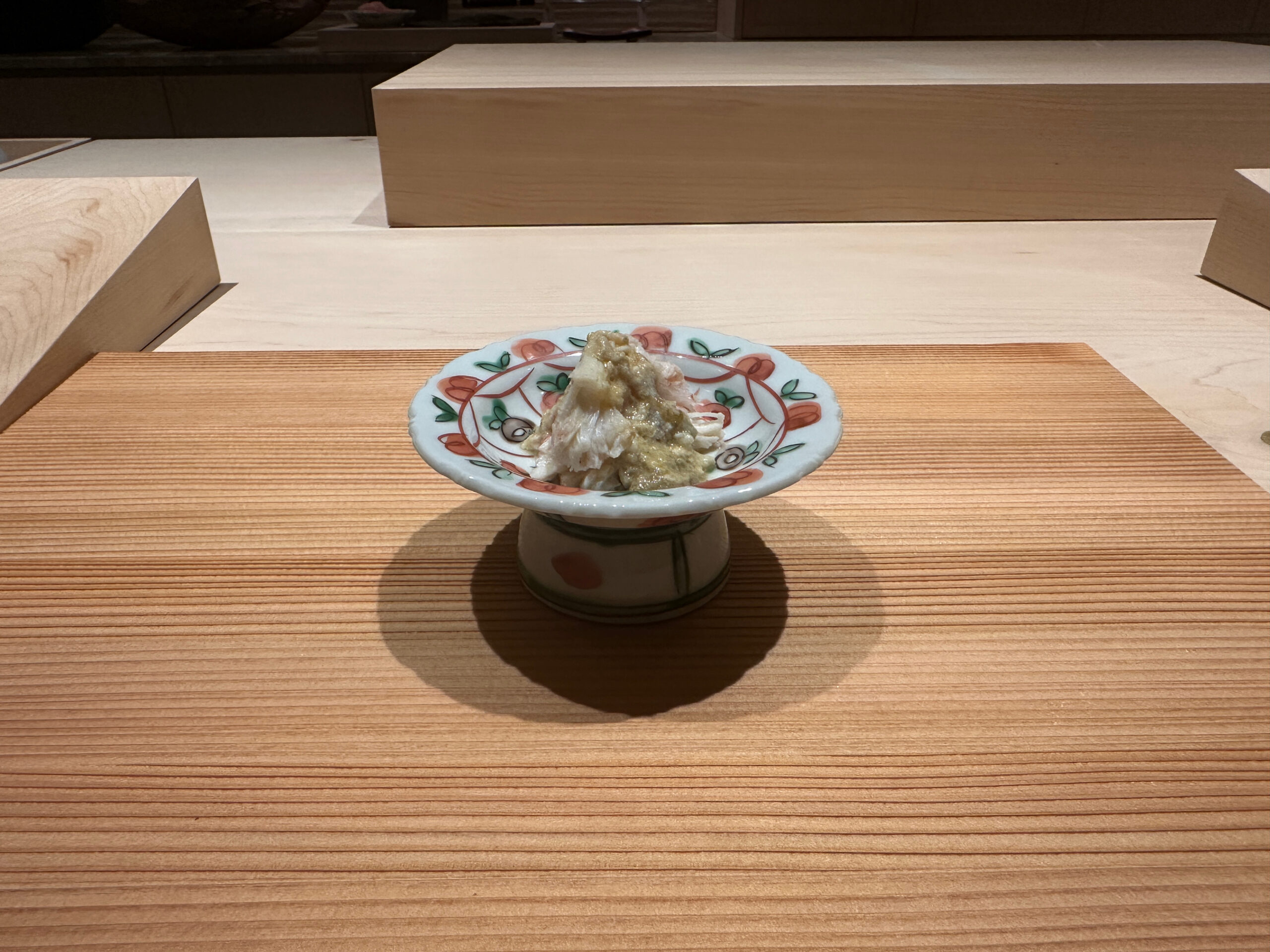
Another angle

3: Kinmedai from Chiba
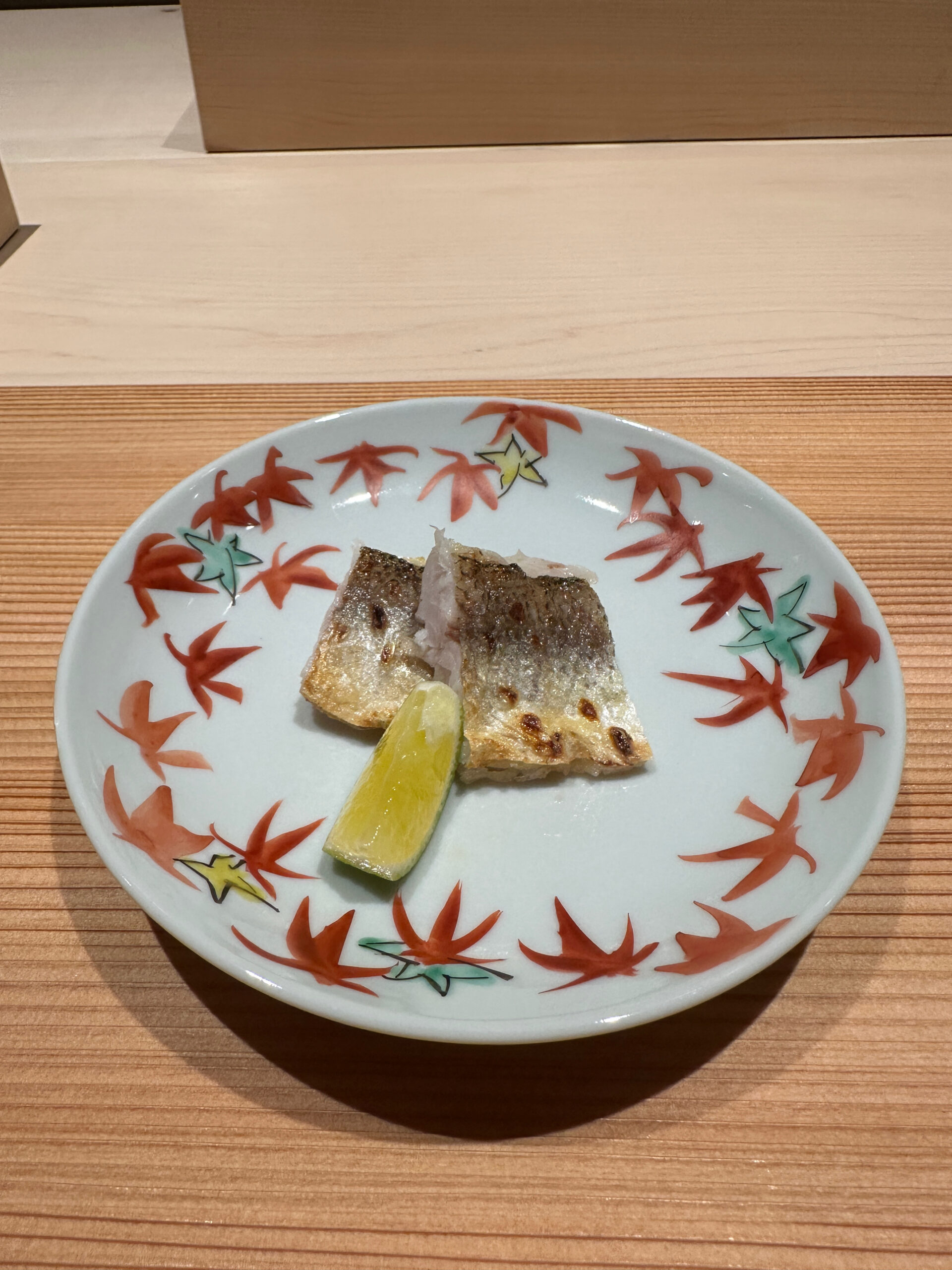
4: Kamasu with Salt from Kanagawa – this was a highlight
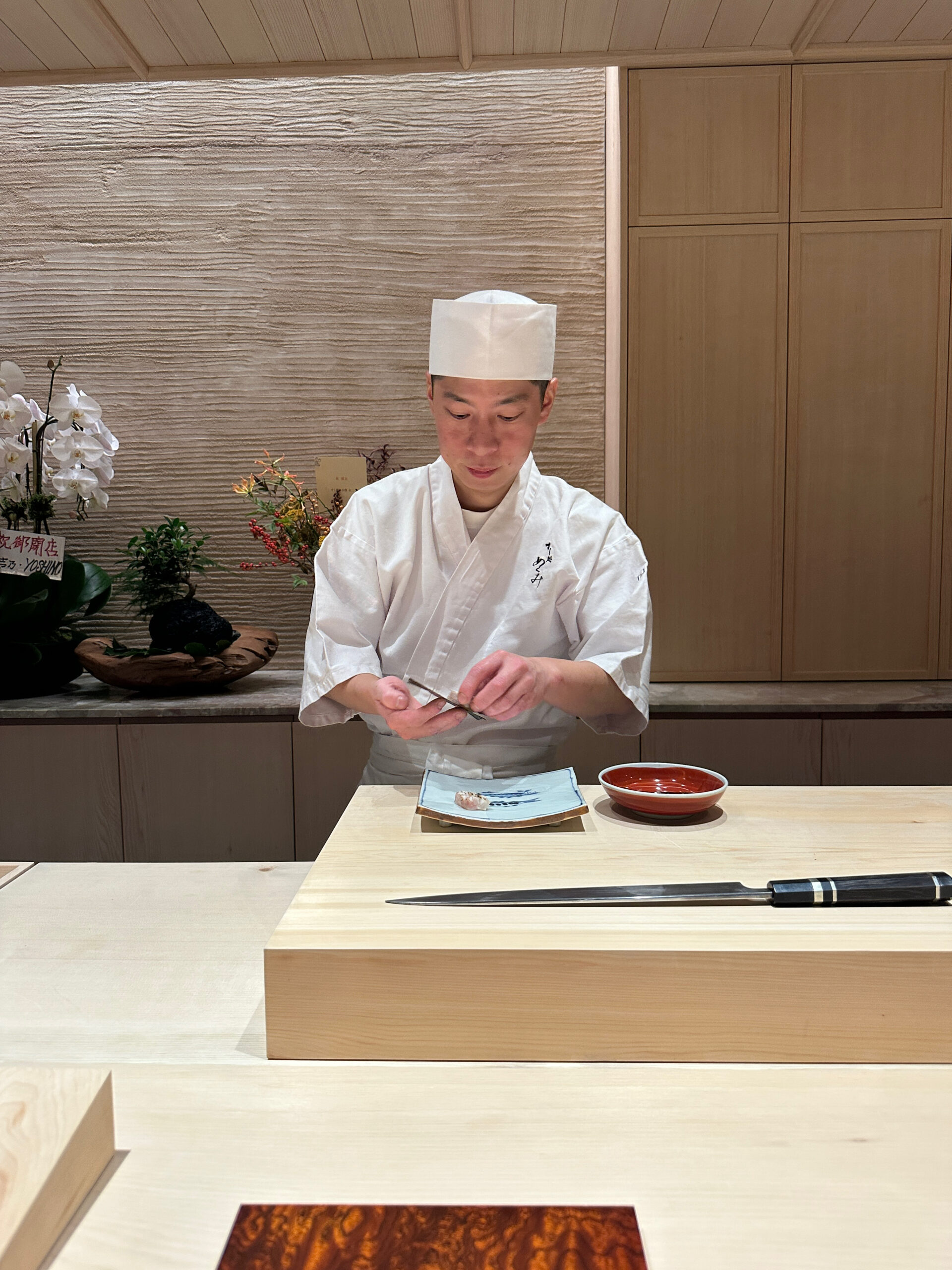
5: Kue from Nagasaki wrapped in Nori
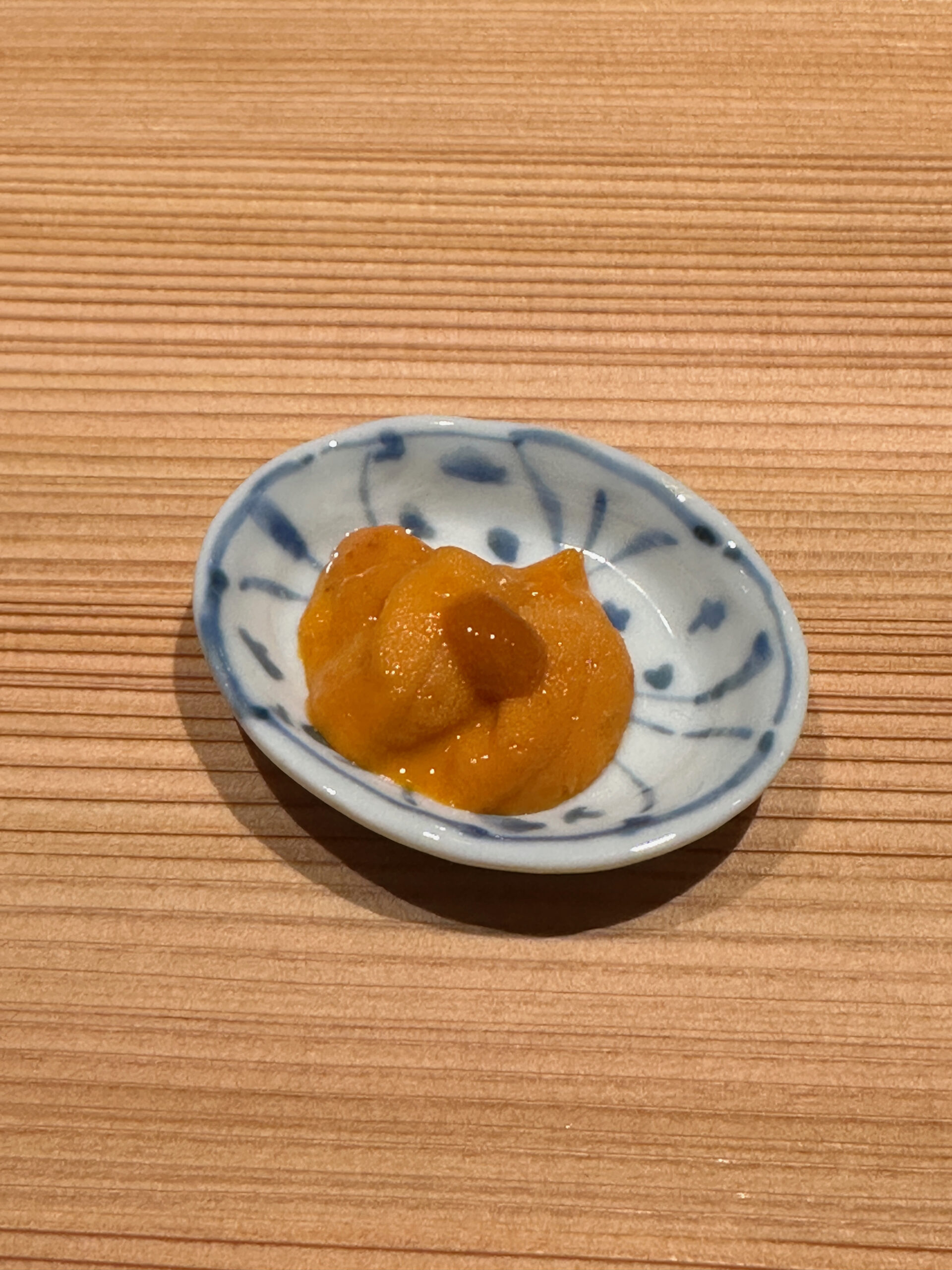
6: Salted Bafun Uni from Hokkaido
THE NIGIRI PORTION WAS EXCELLENT BUT…
I’ve heard some whispered concerns around the nigiri here, but for the most part, these courses were excellent. We started with a Madai from Kagoshima, a common early course in a nigiri progression. Surely among the most beautiful “red sea bream” that I’ve ever eaten.
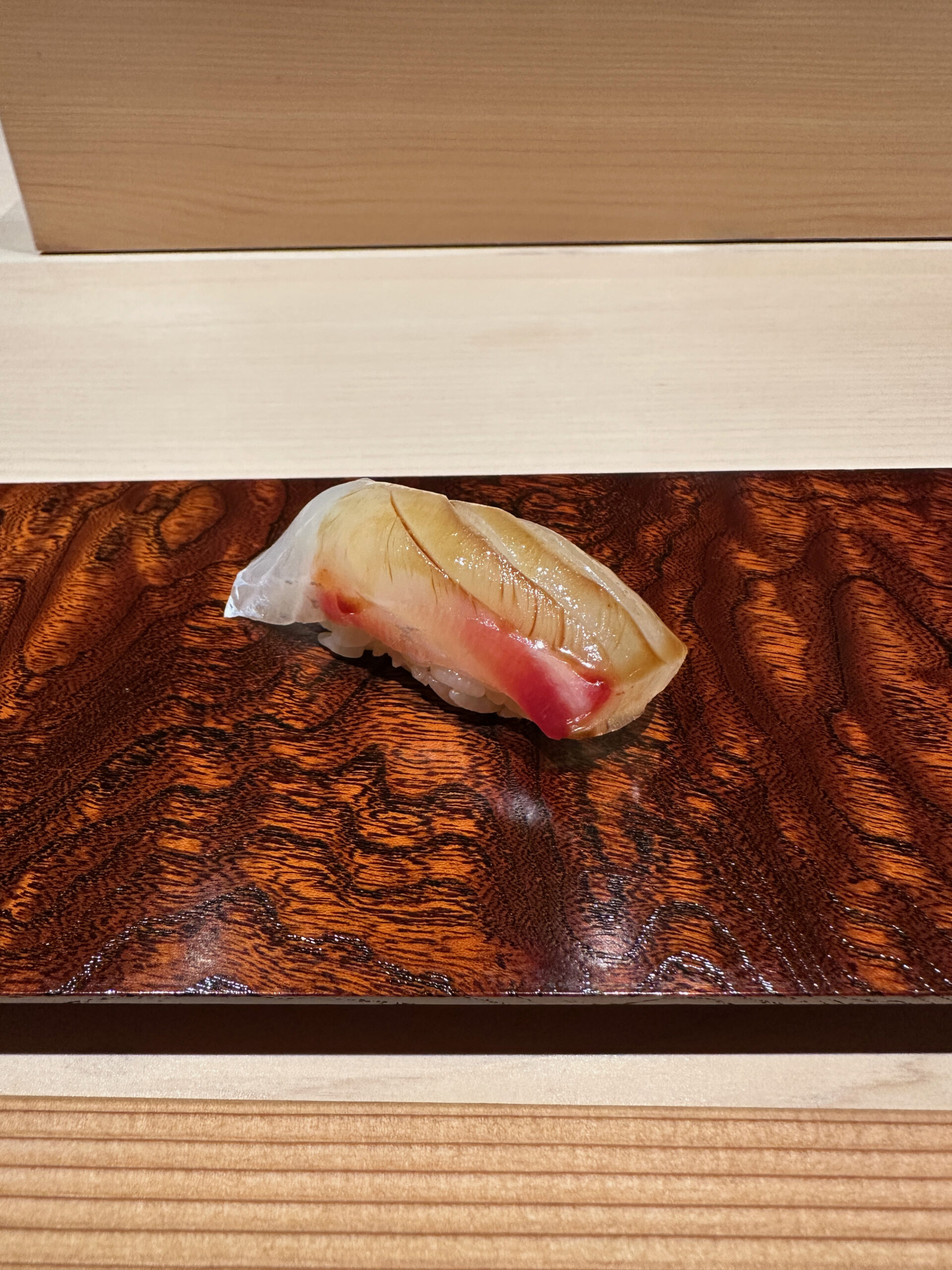
7: Madai from Kagoshima
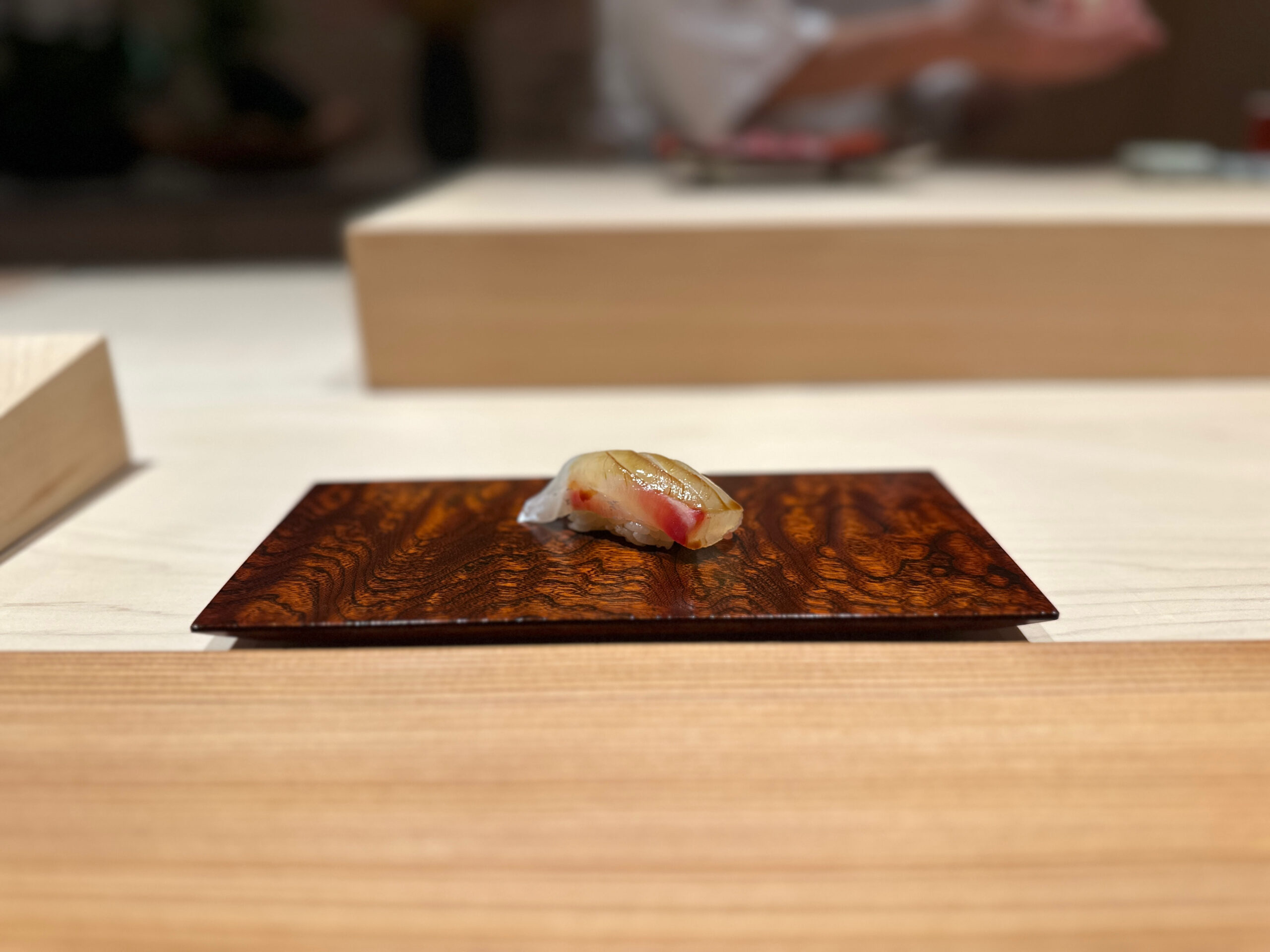
Another angle
Yari Ika (spear squid) was next from Fukuoka. Late autumn is the start of its season, and care is required to make sure it retains flavour.
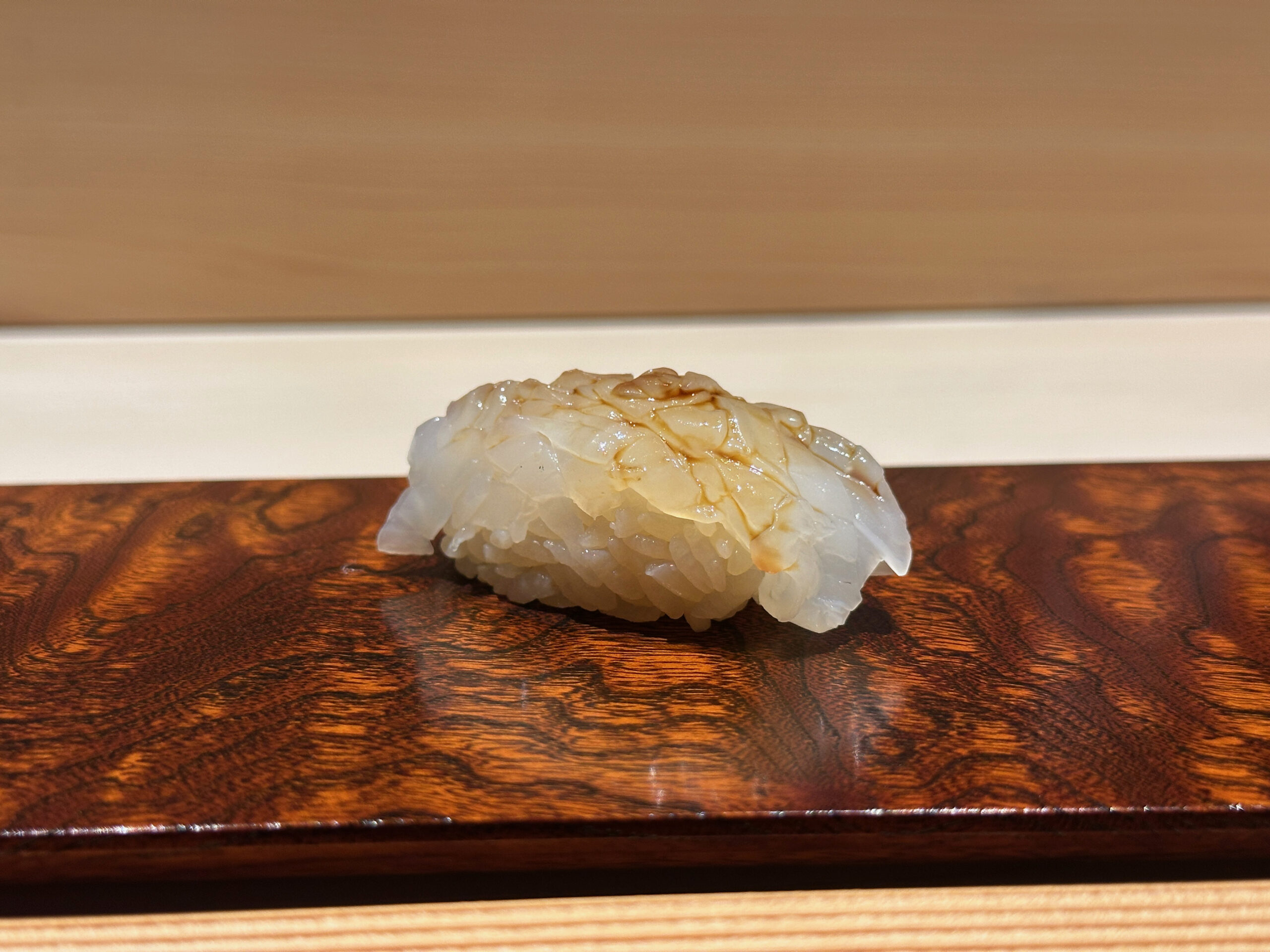
7: Yari Ika from Fukuoka
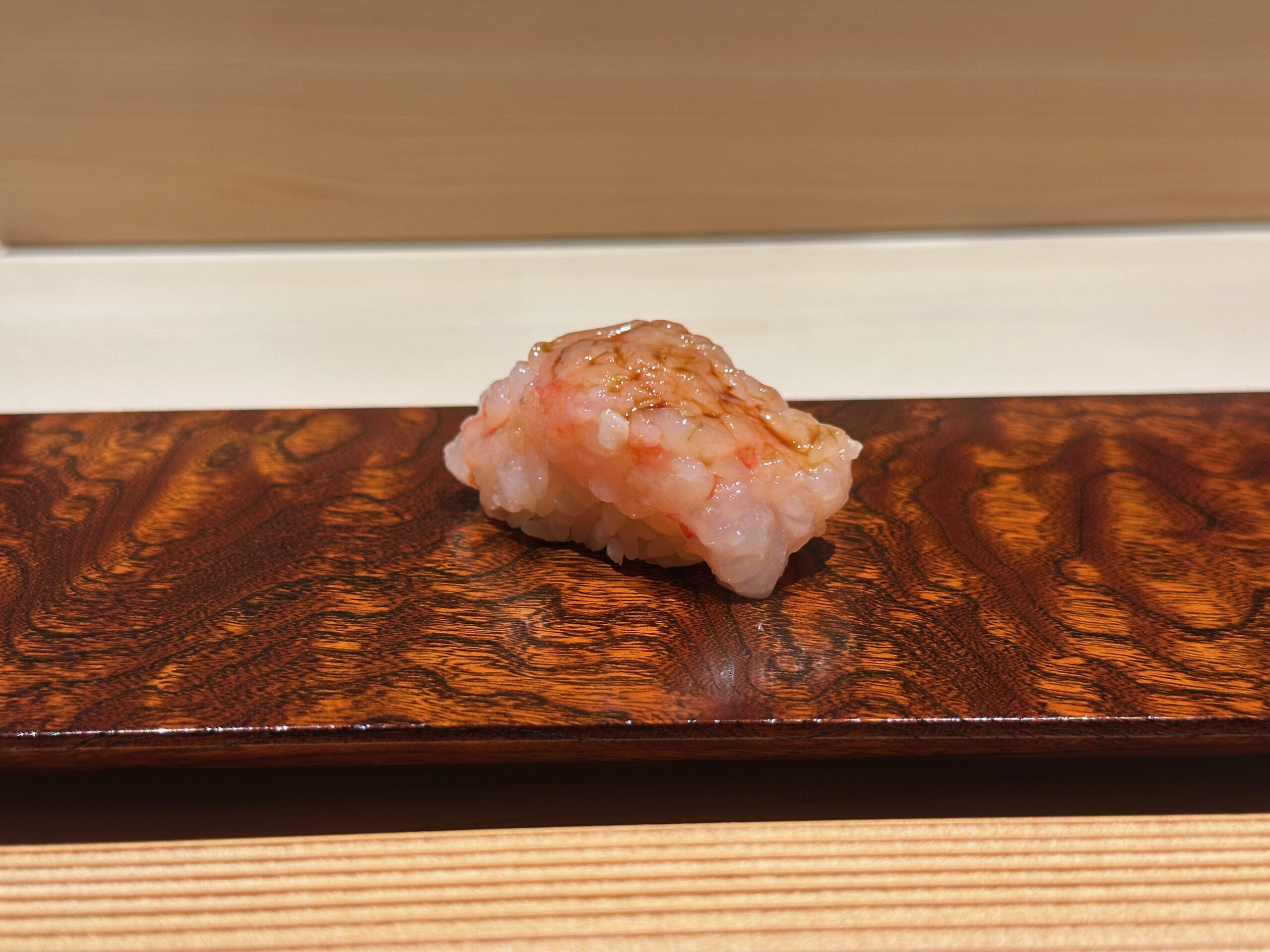
8: Ama Ebi from Ishikawa
Ama Ebi is another autumn neta that I’m glad Mekumi served, if only to remind New York City diners what Ama Ebi actually looks like. It comes from Ishikawa
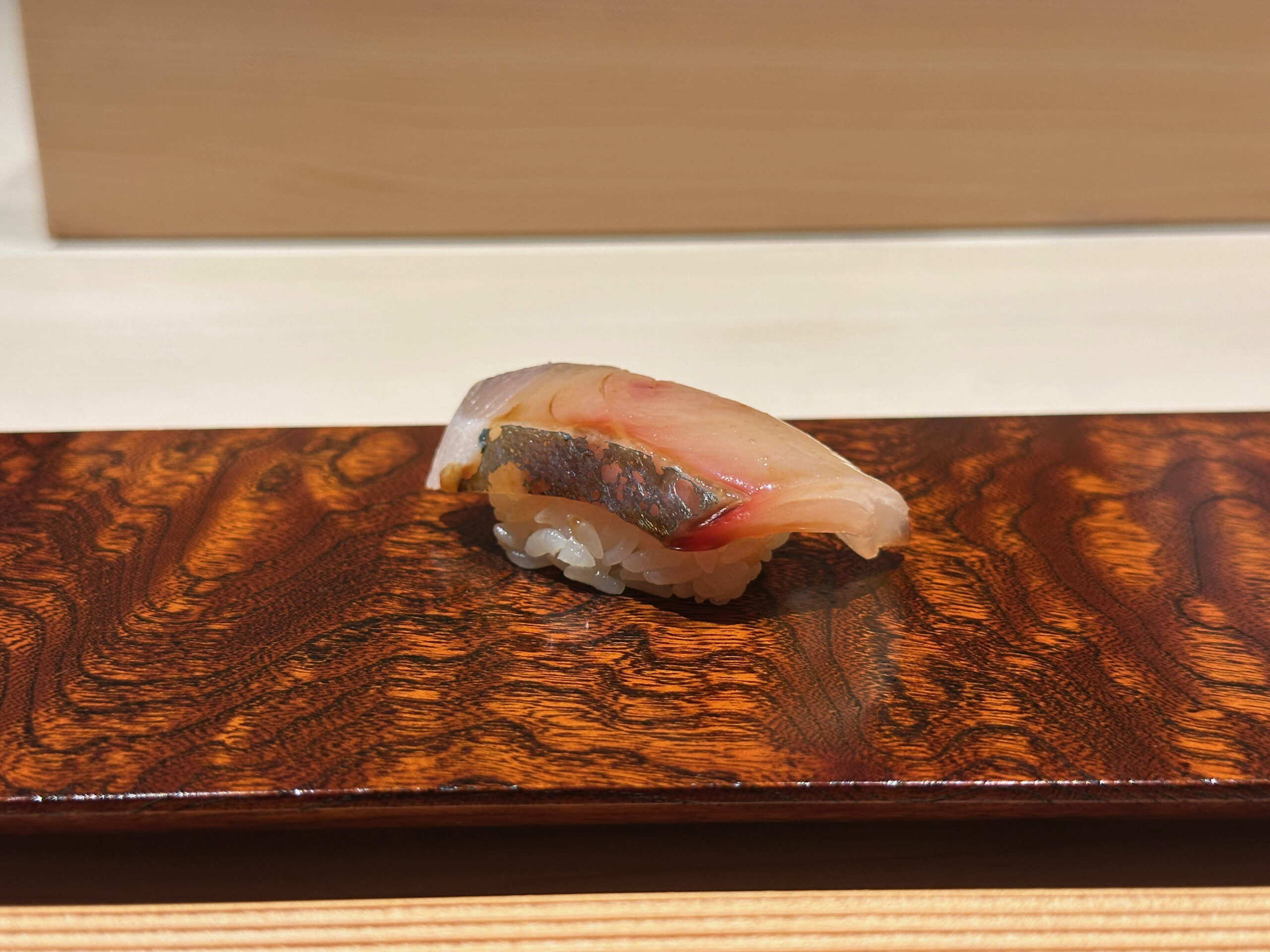
9: Shima Aji from Kouchi
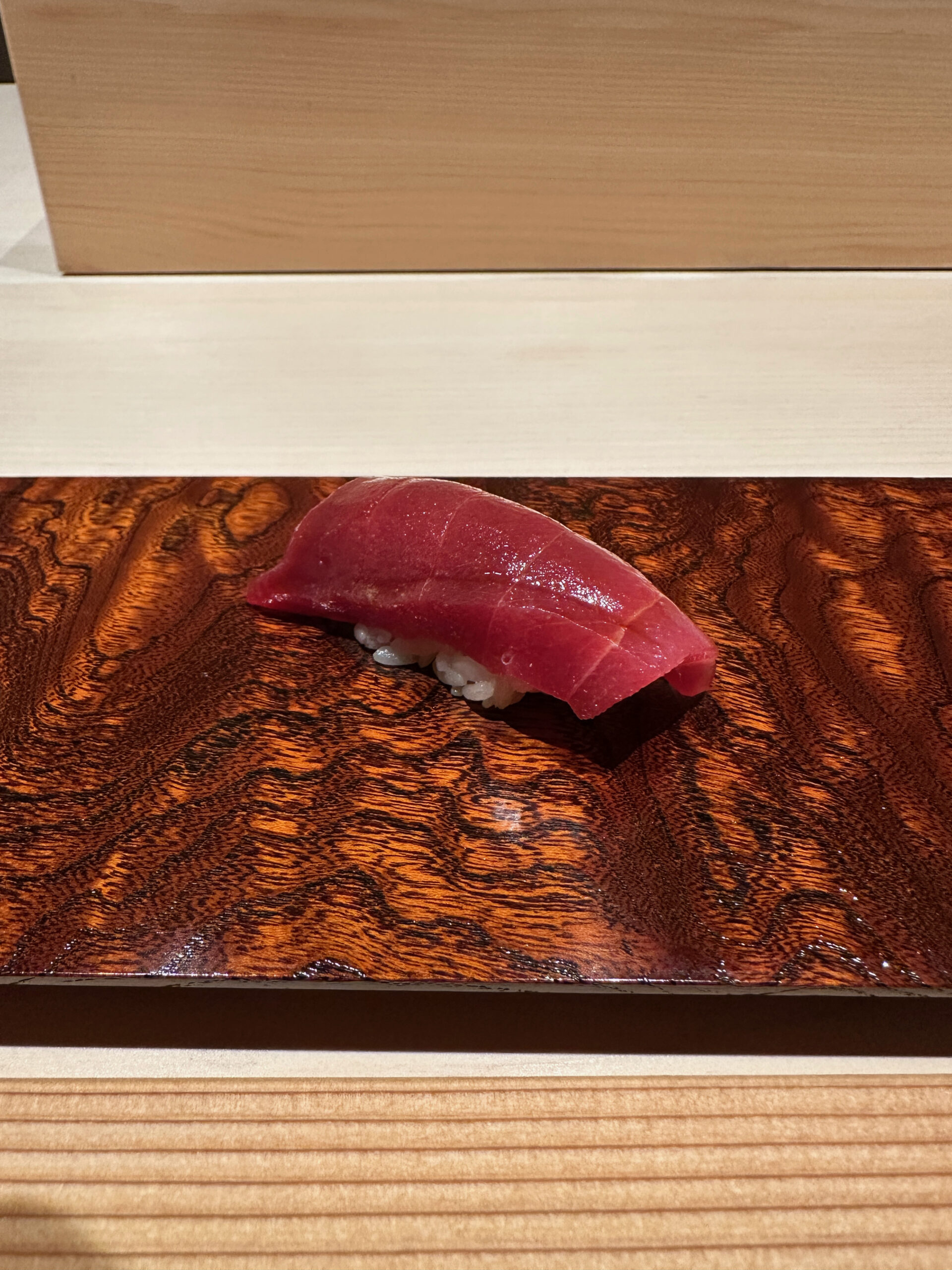
10: Akami from Hokkaido
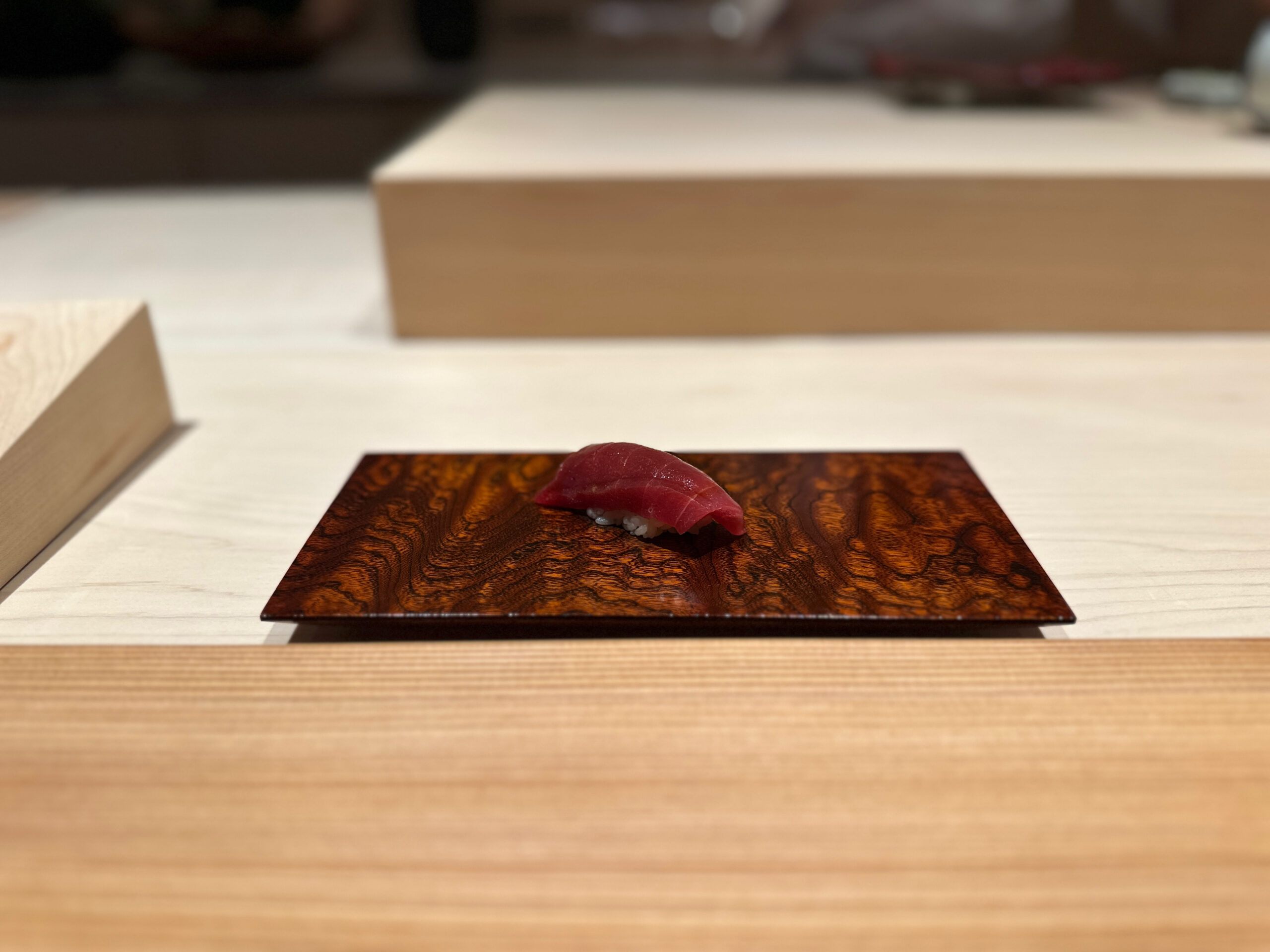
Another angle
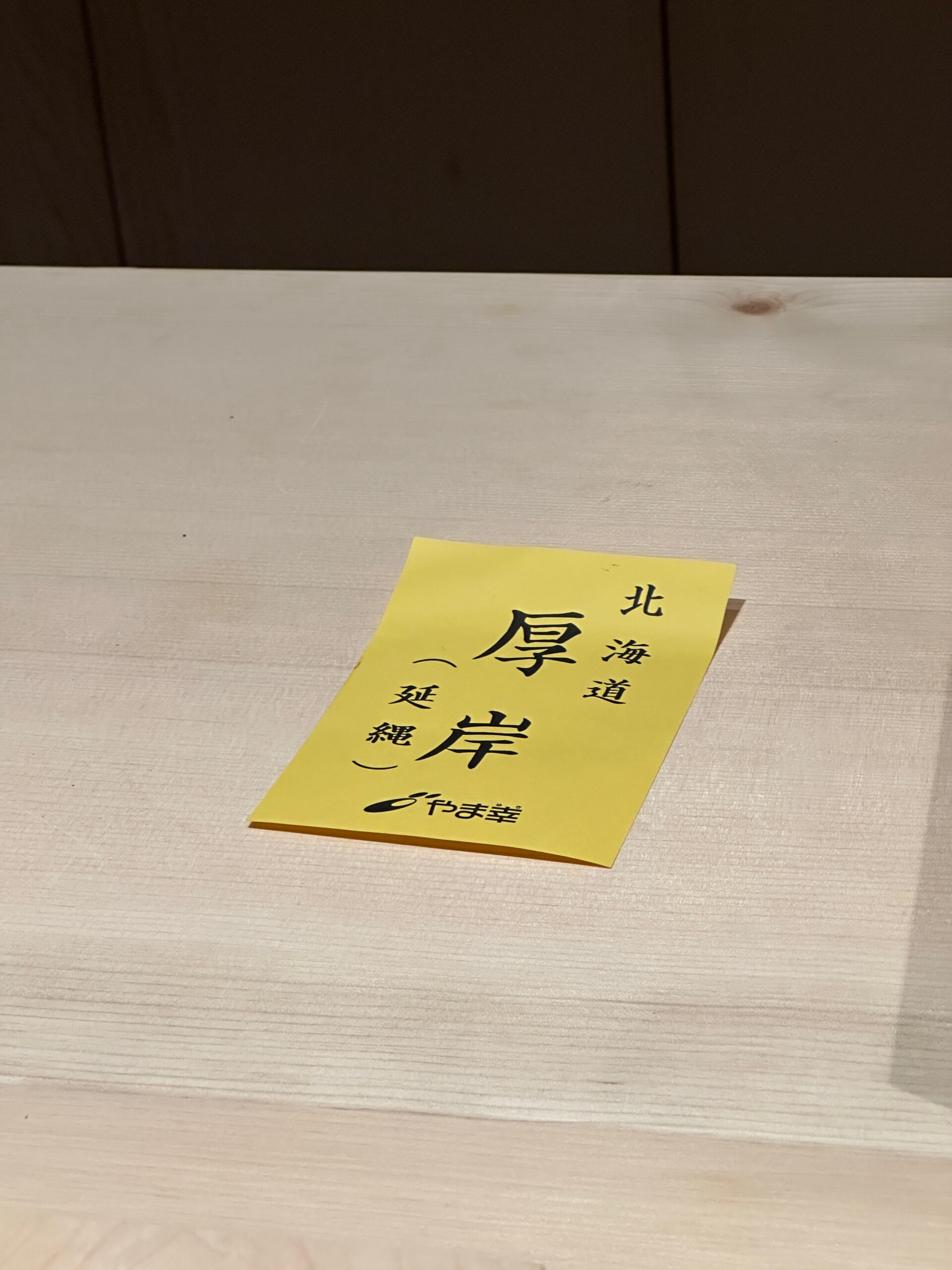
Proudly displaying the proof it comes from Hokkaido
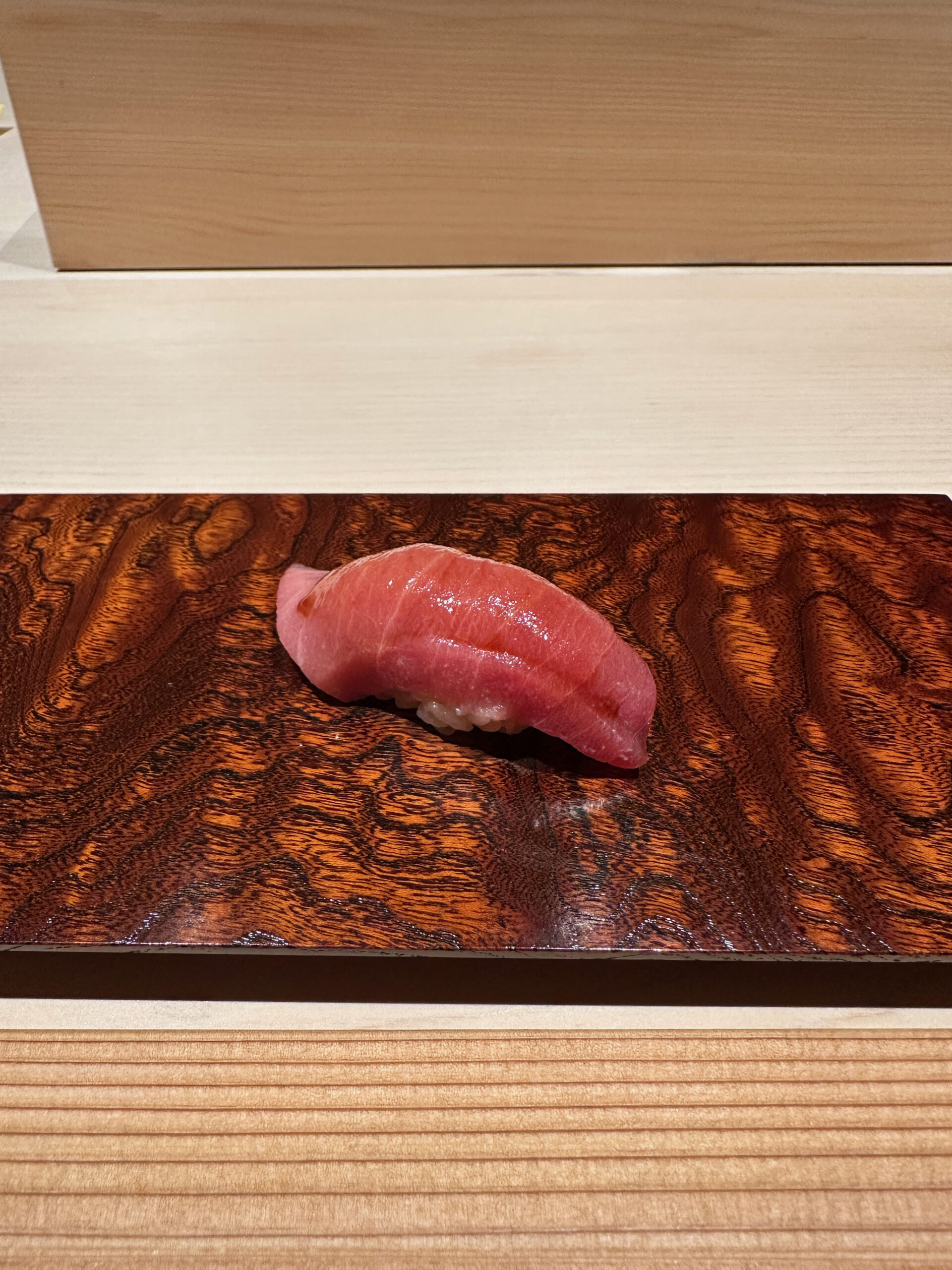
11: Chu Toro from Hokkaido
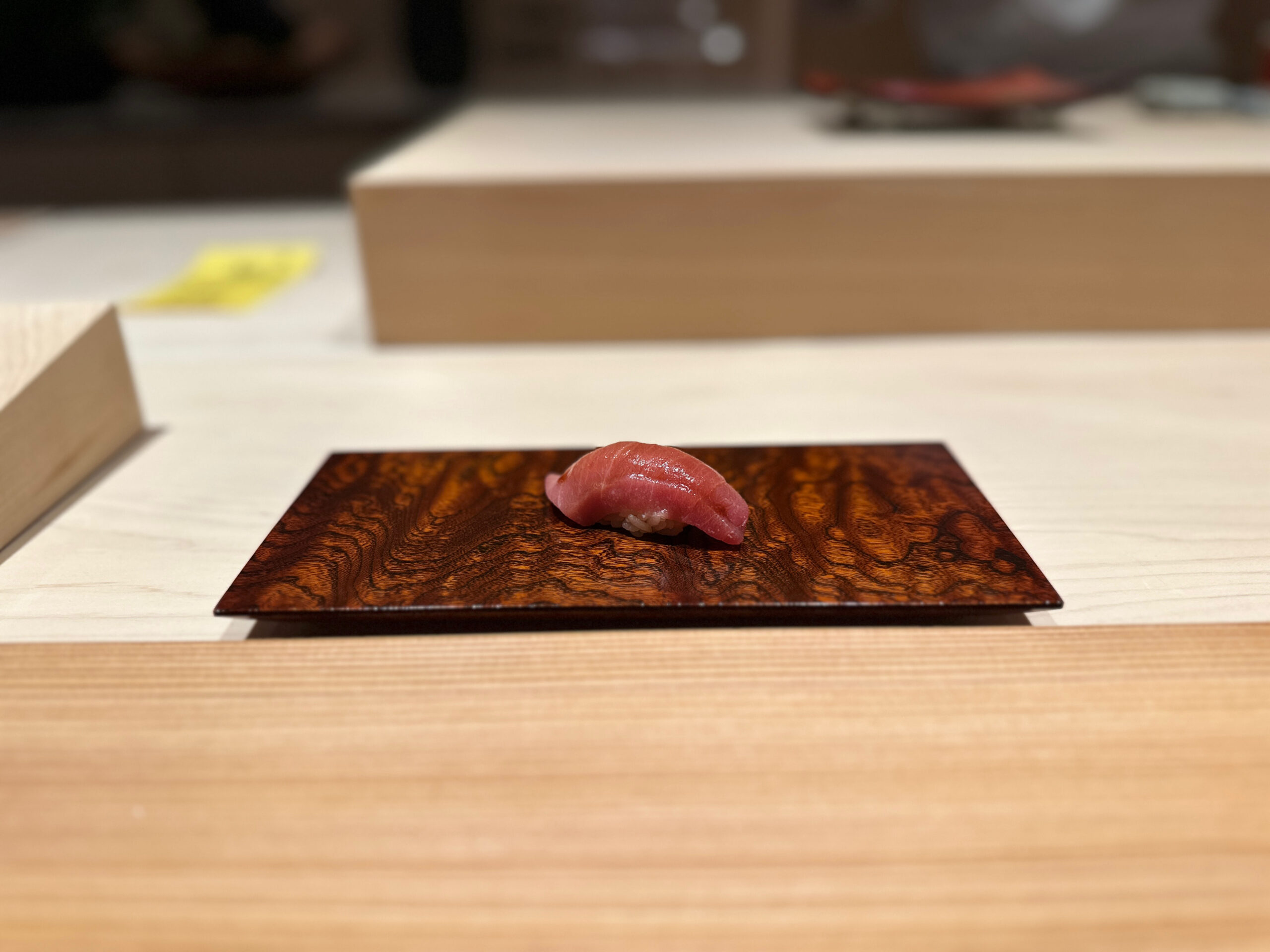
Another angle
THE SHARI
Sushi Mekumi uses Sasashigure shari for their sushi, mainly because of its subtle taste and depth of flavour. From that perspective, mission accomplished: the neta is the star here. But it wasn’t always consistent; one of the batches was noticeably hot. Rice should be body temperature, not sun temperature.

13: Ikura
THE KEGANI RETURNS
Mekumi makes use of every part of that Kegani.
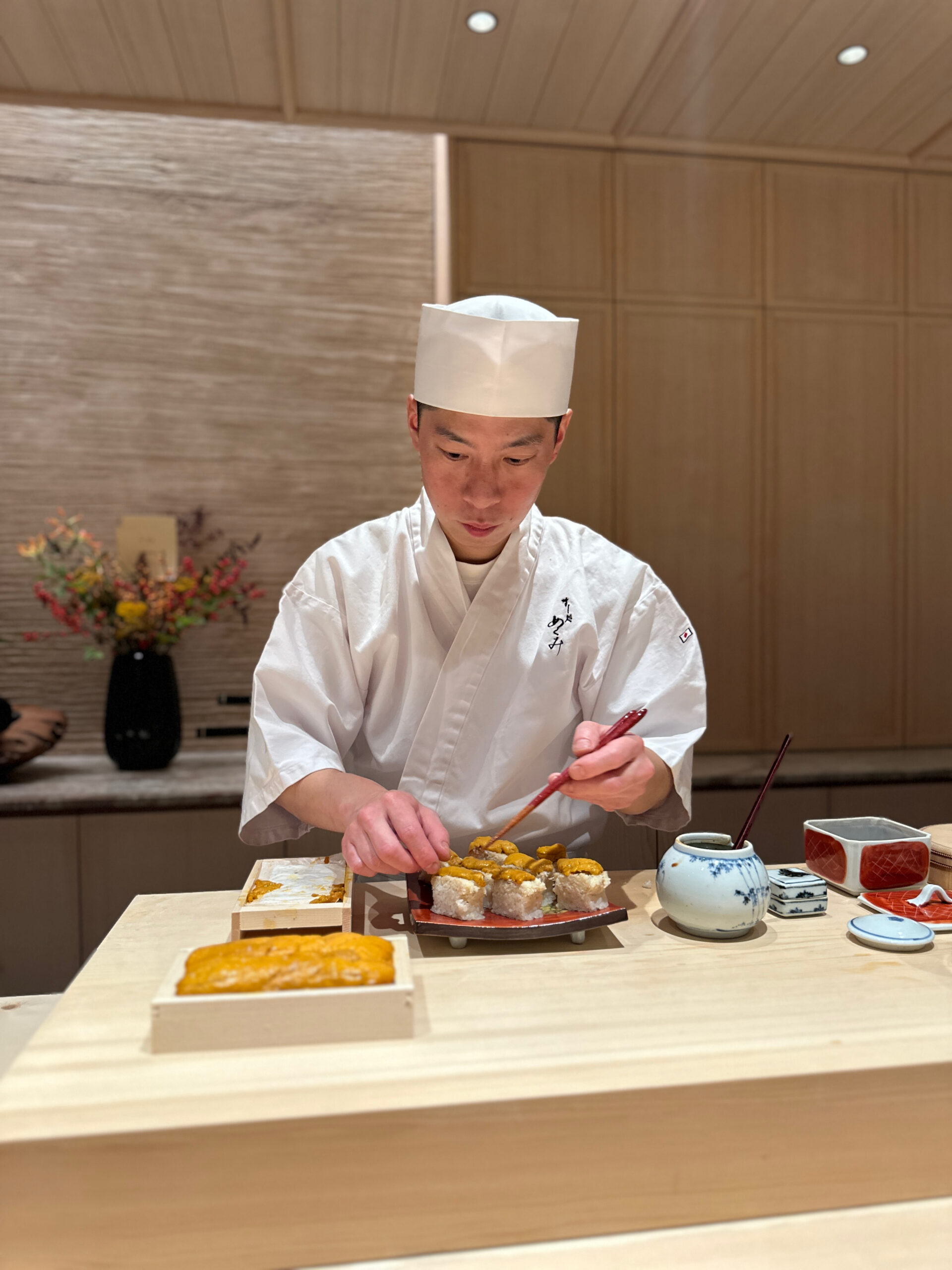
14: Kegani with Uni from Hokkaido, prepared oshizushi style as a nod to a nearby region

15: Kohada

Spotlight on the Kohada
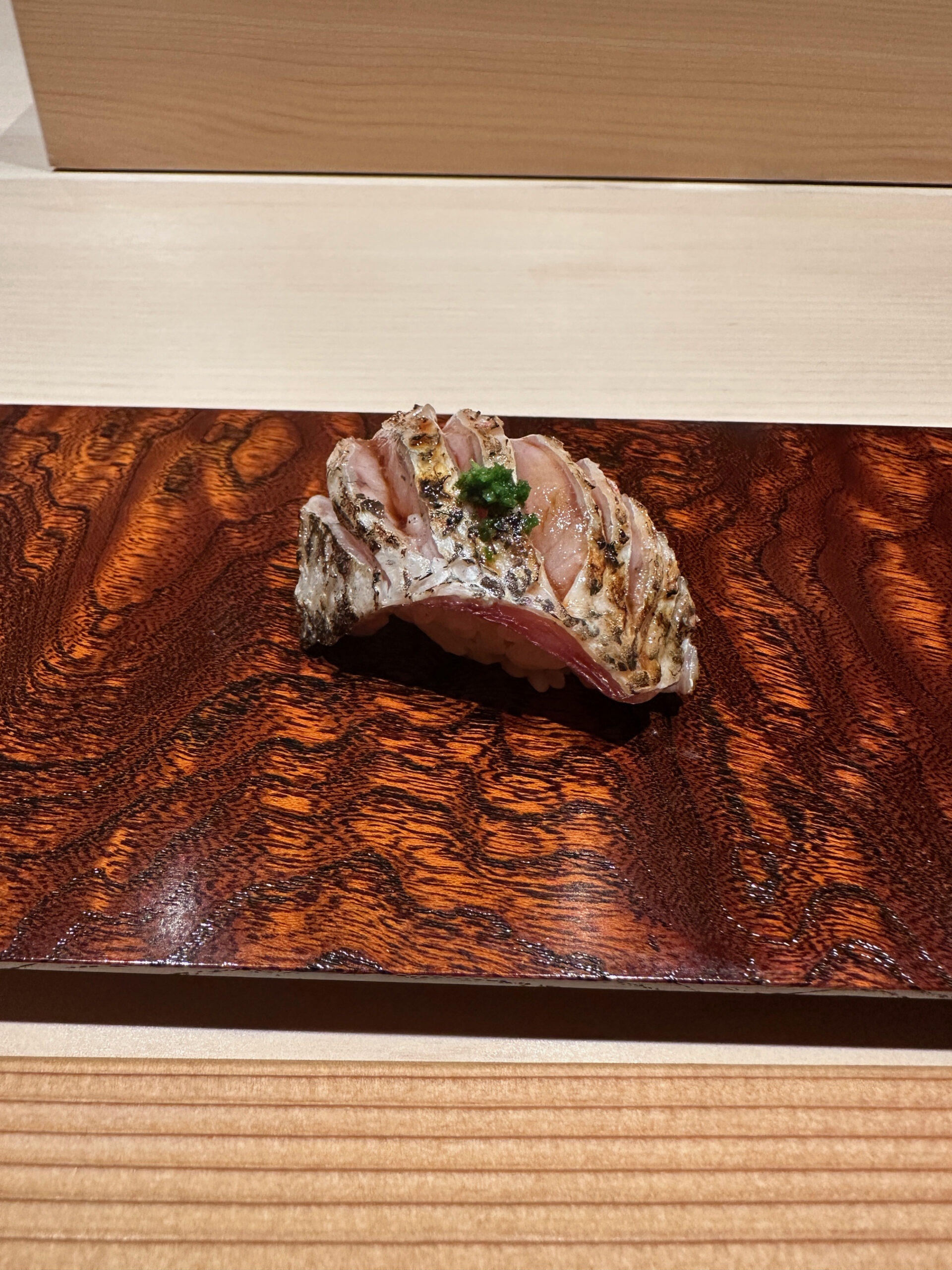
17: Nodugoro from Ishikawa
The futomaki is cut into 8 pieces and chosen one-at-a-time by each customer. I had my fantasy basketball draft later that night, so this was good prep for my crippling indecisiveness. I chose bottom left.
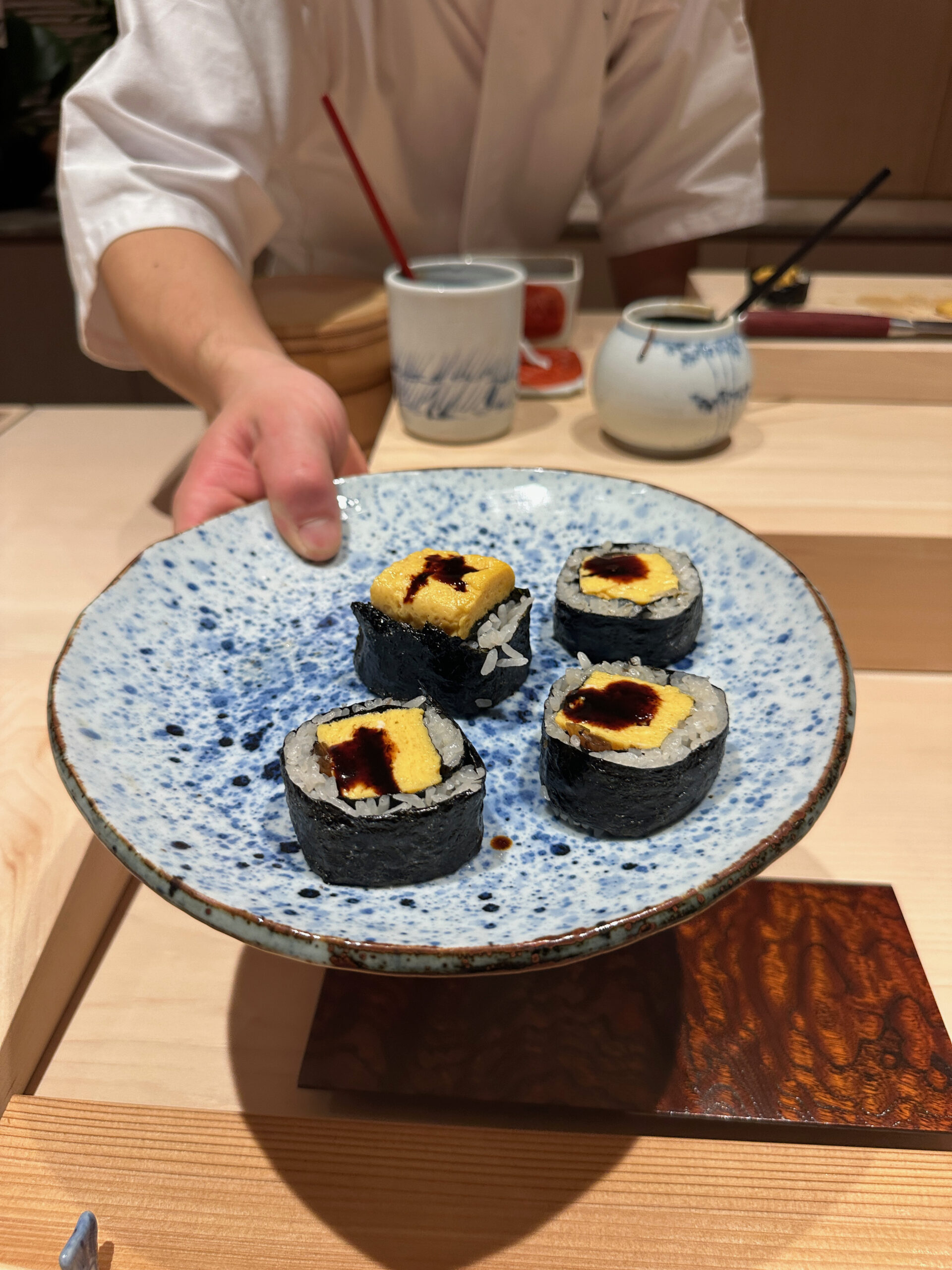
17: Futomaki with Kanpyo, Tamago

18: Miso with Kegani (course 3 that used that crab).
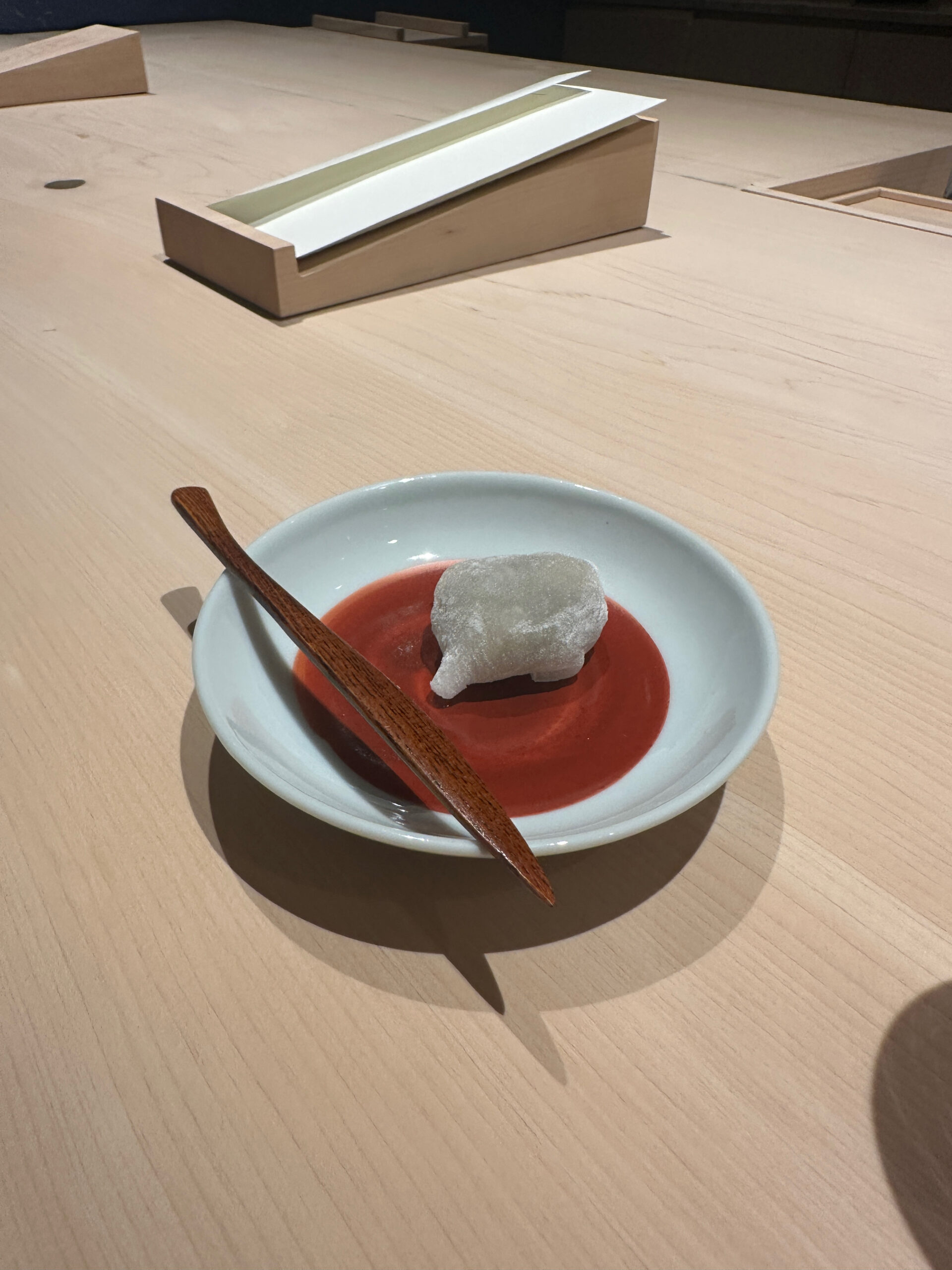
20: Fig Daifuku
THE OKONOMI MENU
For the real nerds, here’s what was offered after the meal, organized by price. All of the Omakase courses were on offer as well, prices not disclosed. Three customers next to me went for rounds 2 and 3 of the Kegani.
- Ankimo (32) from Hokkaido
- Bafun Uni ($32) from Hokkaido
- Hirasuzuki ($14) from Mie precture
- Kinmedai ($21) from Chiba
- Madai ($15) from Shizuoka
- Murasaki Uni ($15) from Santa Barbara
- Sanma Sujime ($14) from Hokkaido
- Sawara ($19) from Mie prefecture
- Sumi Ika ($22) from Kagoshima
- Tennen Buri ($22) – assume from somewhere north
- Yaito Katsuo ($20) from Kagoshima
If you can read a map, you’ll realize that zero were from Hokuriku. But shoutout Mie prefecture, site of my honeymoon. Review here if you missed that.

Cutting the futomaki
I ordered the Murasaki Uni, the Ankimo and the Sanma Sujime. The first two are personal favourites (Ankimo is my third child). The Sanma was in season, and Sujime is a traditional technique for preserving fish, usually silver-skinned or blue-skinned, where fish salted, washed in vinegar, and left for some (or many) hours. Of course it enhances the flavours as well.
The Sanma was delicious, but the other two had some issues; the Ankimo burned my mouth to a crisp. Serving it hot is fine, but I’m assuming “match the temperature of Captain Hook’s footbath” wasn’t the goal.

Extra: Sanma

Extra: Ankimo
The Murasaki uni had a different problem; it didn’t show up at all (certainly did on the bill though!). They were all very apologetic, and ultimately who really gives a shit.
THE VERDICT
So yes there were some kinks, and of course I’d rather have sampled the best of Hokuriku (I’ll have to stick with Takeda for that). But I’m not sure there’s many (any?) sushiya at this price point that are as focused on seasonality as Sushi Mekumi (maybe Sushi Mumi?). The Ama Ebi, Yari Ika, Kawahagi and are all key parts of the autumn sushi calendar. The openers were both tasty and tasteful. There’s no saucy, 20-minute-to-prep main courses masquerading as otsumami. And the sushi, save for the mid-stream rice snafu, was truly excellent.
This is a great sushiya, with the chance to be among the city’s best.
Recommended.
